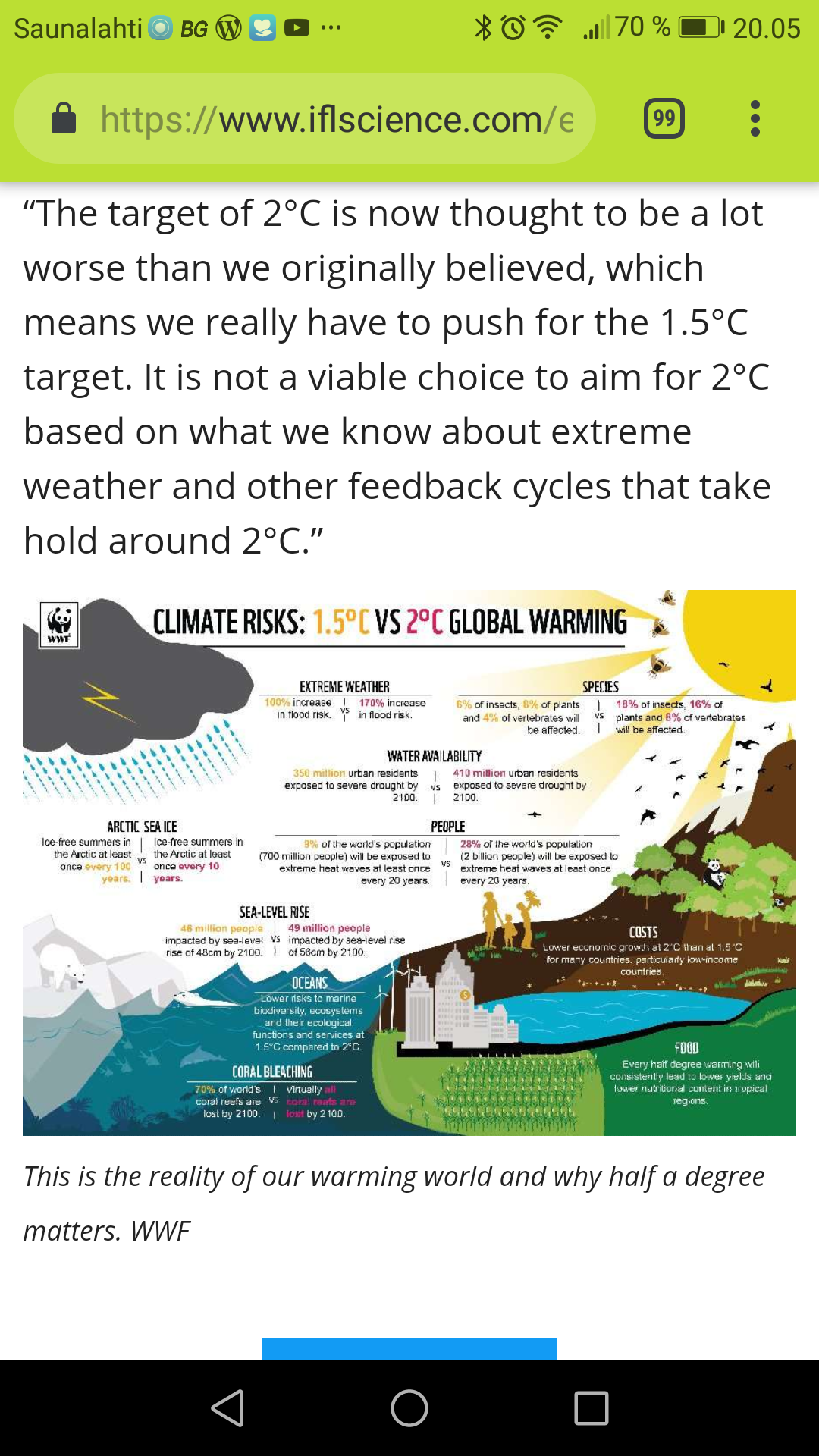The Intergovernmental Panel on Climate Change (IPCC) has unleashed their Special Report on the impact of global warming reaching 1.5°C above pre-industrial levels.
“This IPCC report is set to outline a rescue plan for humanity,”
“1.5°C is the new 2°C,”
If we stick to Paris Climate Agreement commitments, we could still see a global warming of about 3°C by 2100.

1,306 Comments
Tomi Engdahl says:
The human fingerprint on global warming was likely evident in Earth’s atmosphere far earlier than previously thought — even before the invention of modern cars, a new study says. https://cnn.it/40aELjR
Tomi Engdahl says:
https://etn.fi/index.php/13-news/17662-luetuimmat-pian-aurinkopaneeli-tulee-pakolliseksi
Tomi Engdahl says:
The Gulf Stream is on the verge of COLLAPSING, scientists warn – as they find the first concrete evidence of major ocean circulation system weakening
https://www.dailymail.co.uk/sciencetech/article-14837799/Gulf-Stream-verge-COLLAPSING-scientists-warn.html?ito=social-facebook&fbclid=IwZXh0bgNhZW0CMTEAAR5rvGsc9UN7cHeGYpqdlb3jpzmsnEfgQ15mCu_1TasdSmlD4ZMHYraCJ46deg_aem_kU7izlOTkRR21x-7CjUa9g
Tomi Engdahl says:
Analyysi: Olen tehnyt 40-vuotisen uran enkä ole koskaan uutisoinut näin merkittävää asiaa ilmastonmuutoksesta
Kiinassa hiilidioksidipäästöt ovat kääntyneet laskuun. Se merkitsee sitä, että koko maailman päästöt ovat tasoittuneet tai jopa vähentyneet, kirjoittaa tiedettä seuraava toimittaja Heikki Ali-Hokka.
https://yle.fi/a/74-20166934
Tomi Engdahl says:
Pääkirjoitus: Osalle tuli yllätyksenä, kun ilmastonmuutoksen arki alkaa nyt näkyä
https://www.is.fi/paakirjoitus/art-2000011345490.html
Tomi Engdahl says:
Tutkijoiden mukaan ilmastonmuutos aiheutti järkyttävän määrän kuolemia Länsi-Euroopassa kesäkuussa.
https://www.iltalehti.fi/ulkomaat/a/01b9b4df-a6f4-4f3f-99c5-c4ec72c0bd23?utm_medium=Social&utm_source=Facebook&fbclid=IwY2xjawLbrYBleHRuA2FlbQIxMQABHmhK4xxhL9Mq9dLoZrjoaGp74voINOniXumYlD8EBnHaAuMA7CwRIIz22X7T_aem_QyFi6nDU-Wzasu_8ngzTtg#Echobox=1752085570